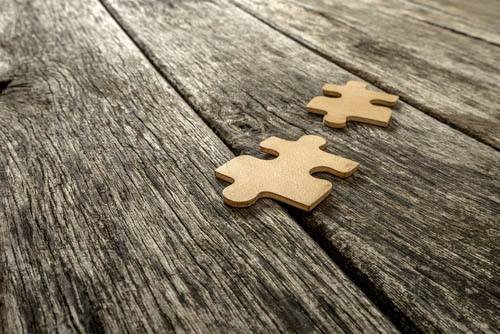In the days when bridge and lawn bowling were popular forms of entertainment, jigsaw puzzles made their debut. Created by cartographer John Spilsbury to teach school children about the British Empire in the 1760’s, puzzles were originally hand cut out of wood before evolving into mass-produced, die-cut, cardboard right around the time of the Great Depression. With unemployment at an all-time high and the economy bottoming out, puzzles “took on a vital and positive source of family entertainment” according to this article by Berkshire Puzzles.
It makes sense that a number of individuals entered the jigsaw market at that time, bringing their own unique production methods. Many of these are still used today.*
One particularly fascinating and innovative production method described by Berkshire Puzzles’ article was that of Auburn, Massachusetts native Mr. Charles Russell. He fastened a saw blade to his wife’s sewing machine and used that to cut wooden jigsaw puzzles. His puzzles were immensely popular and were especially enjoyed by distinguished business mogul Mr. Bing. When word of Mr. Russell’s failing eyesight reached Mr. Bing, he promptly designed a highly specialized lamp that enabled Mr. Russell to cut puzzles for over another decade.
The history of the jigsaw puzzle resonates with us, as it reflects the core of our mission, whether it be making a living, trying to improve on a production process, helping someone else or simply following a passion of your own. At the Open Bench Project there are many things that bring us to the table, but puzzles in particular – in both the figurative and literal sense – provide an opportunity to really put our minds together.
Solving. Answering. Fusing. Uniting.
And then some,
Your Friends @OBP
*For more info on the history of puzzles, check out “The Jigsaw Puzzle: Piecing Together a History” by Anne D. Williams.


Recent Comments